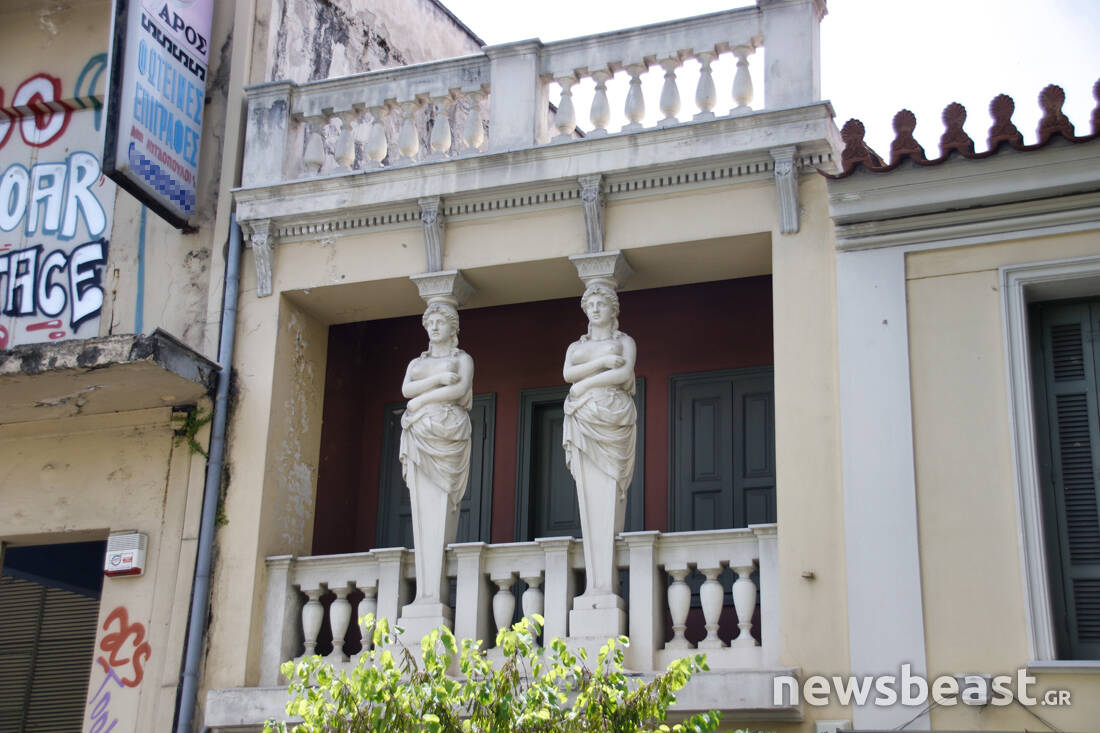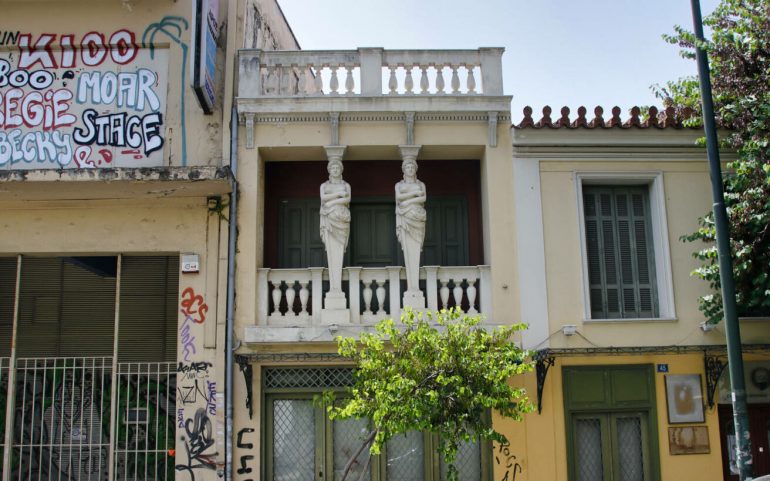It is impossible to have passed through this point and not noticed it. At 45 Agioi Asomaton Street, at Scabies, is a restored neoclassical building that has something strange. On the balcony of the first floor, there are two large all-white Caryatids with their arms almost crossed, and when you look at them, you can see that they ran away from an ancient Greek temple. Impressed by the French photographer Henri Cartier Bresson, one of the most important of the 20th century, he captured them in black and white film in 1953, while the great painter Giannis Tsarouchis created two paintings with the central theme of this building. He also joined writers' novels, became a backdrop for theatrical scenes and of course a canvas for dozens of analyzes of why they were placed there.
The urban legend of the capital even wants the first owner of the property to mourn the death of his two daughters and in order to alleviate his misery to ask for the erect statues to be erected on the balcony of the facade - although this is not confirmed. So what happens to the house on Agioi Asomaton Street?
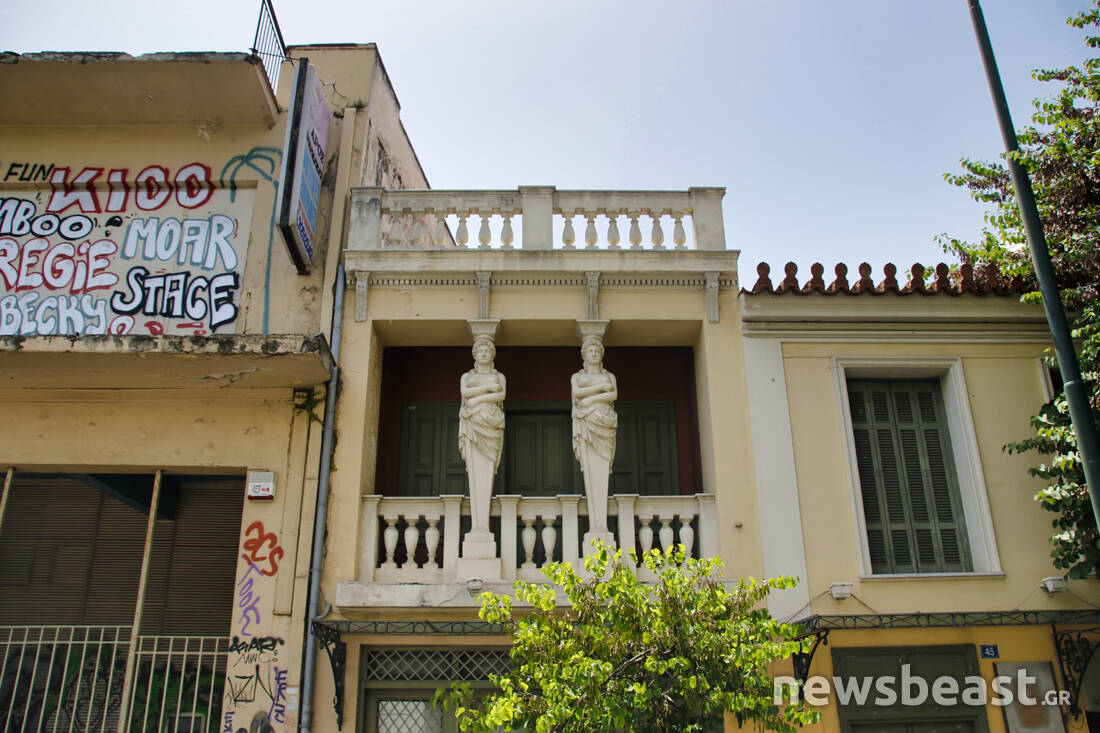
The elegant house was built in the late 19th century, however we do not have an exact date. It is a typical example of Athenian neoclassicism and folk architecture of the capital. The Caryatids were created by the Aeginian sculptor Ioannis Karakatsanis (1857 - 1906) who has been distinguished for his works depicting figures of the Revolution of 1821. He is the one who has created, among others, the statue of Athanasios Diakos in the city of Lamia and Ioannis Kapodistrias in height of the holy temple of Panagitsa, in Aegina.
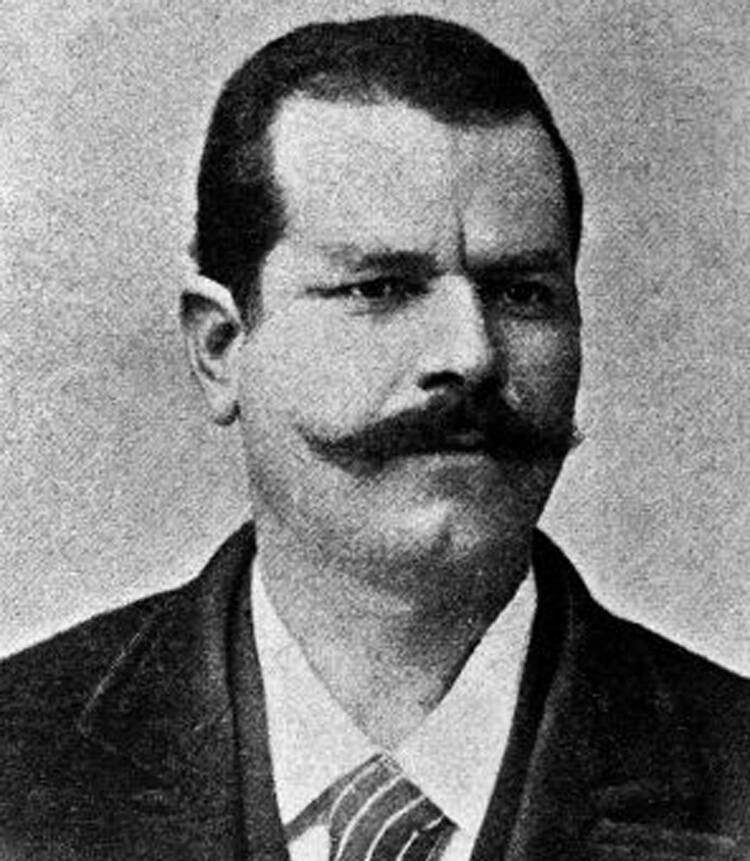

Let us now solve the… mystery. The models used to create the two Caryatids are none other than the sculptor's wife Xanthi and her sister Evdokia. The owner of the house was Karakatsanis himself who lived there with his family. When he died, his family decided to sell the house. So while things are so simple, the urban myth of the loss of the two girls was created that their father could not stand, so he turned to an artist to create their statues. A barber is responsible for this story.
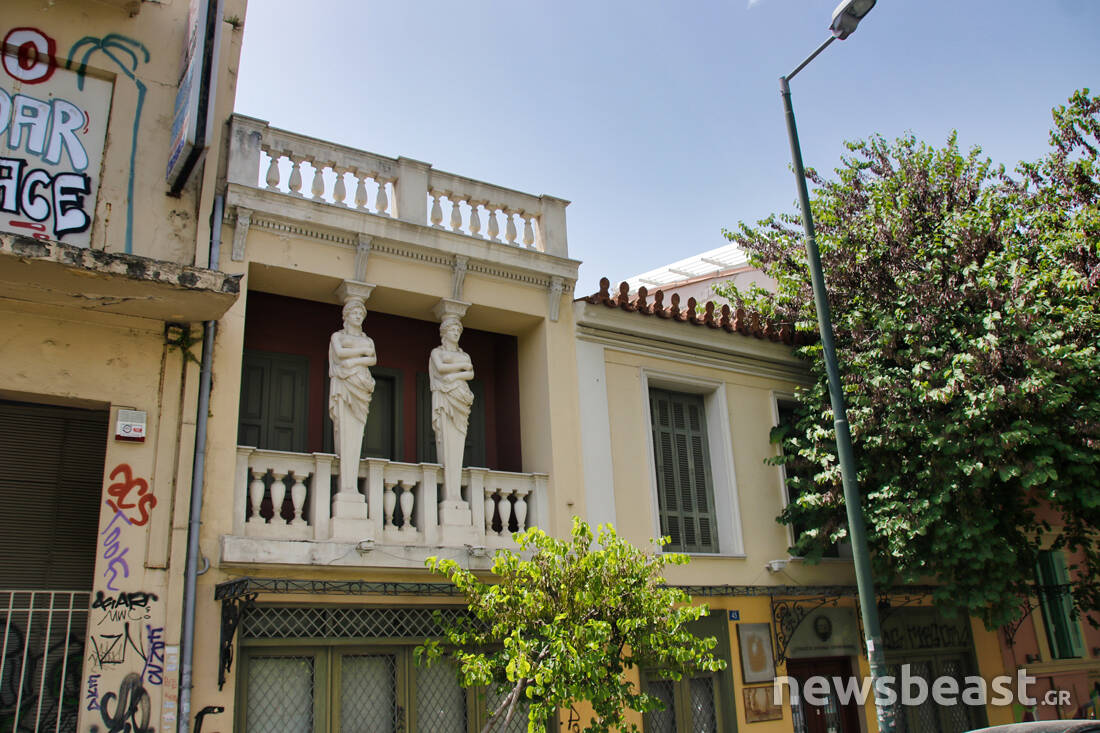
On the ground floor of the property was a barber named Panagiotis Kritikakos. In order to attract people, he created the fairy tale in his mind. Soon, he started spreading it to his customers. From time to time the way the two girls died changed, but the body of the story remained the same and as the years passed it spread. The truth, however, is that the wife of the architect Karakatsani, Xanthi, died in 1949 and her sister Eudoxia a year later, having both had children and grandchildren. Where the barber shop was, however, nowadays houses the Institute of Greek Mills, while the upper floor now houses the offices of the Association of Greek Olympians. The entire building was expropriated in 1973 for archaeological reasons by the Ministry of Culture but was finally declared a protected site in 1989 and was in danger of collapsing, until it was renovated ten years later.
From the beginning, the Caryatids on the balcony of Asomaton Street not only captivated the eyes of passers-by who glanced, stood or waited for a while to observe, but also inspired a number of artists. In the distant 1953, the internationally renowned photographer Henri Cartier Bresson is in the Greek capital, who is considered one of the "fathers" of photojournalism with his work having gained universal recognition worldwide. He was 45 years old then. He sets up his camera opposite the house and corrects his frame in the lens. The black and white photo he will take is excellent as it has a strong symbolism. He has captured the house with the two Caryatids at the moment when just below, on the street, two black-clad grandmothers pass by. The juxtaposition of the vigor of young statuesque women with old age. As he put it, "I suddenly realize that photographs could reach eternity through the moment."


This photograph has been diligently dealt with by the author Demosthenes Kurtovic in his book "It is done - Essays on photographs" (Opera publications, 1996). As he states, every symbolic photograph, every photograph taken to project an idea, is essentially propagandistic. "The well-known photograph taken by Henri Cartier-Bresson in 1953 in Metaxourgio is symbolic, that is, propagandistic. It is based exclusively on an ideological finding: the parallel between the gypsum Caryatids and the two elderly Greek women passing underneath. But what idea does the photo symbolize? The answer seems easy and pleasant. The past is not dead. The simple austerity, the evocative archetypal nature of the figures in the classical art of antiquity is repeated in the form and movement of the two modern Greek women. The tradition continues. "In today's Greece you can see antiquity walking the streets alive."
He continues: "But are things as simple as the fans of this photo think (because it seems that their admiration is a function of its optimistic interpretation)? Why do the two passers-by embody the ancient beauty of the Caryatids? The Caryatids are young and slender - the two women in the photo are old and with a thick, amorphous body. From where and to where do two such figures correspond to the ancient or to any other ideal of beauty?
If we let this objection lead us, the parallel between the two plaster casts and the two living figures emphasizes not so much a resemblance as a contrast. The present is a sad echo of the past. Beauty ended in ugliness, as youth ends in old age. Today's Greece is the degenerate face of ancient Greece. This second interpretation, although more melancholy, is definitely more reasonable. But did Cartier-Bresson immediately want to make such a commonplace comment? Of course, a great artist of photography is not necessarily an original thinker. We feel, however, that we would be wronging the famous photographer if we considered his inspiration so close. And the impact of this photo seems to confirm this feeling of ours ".
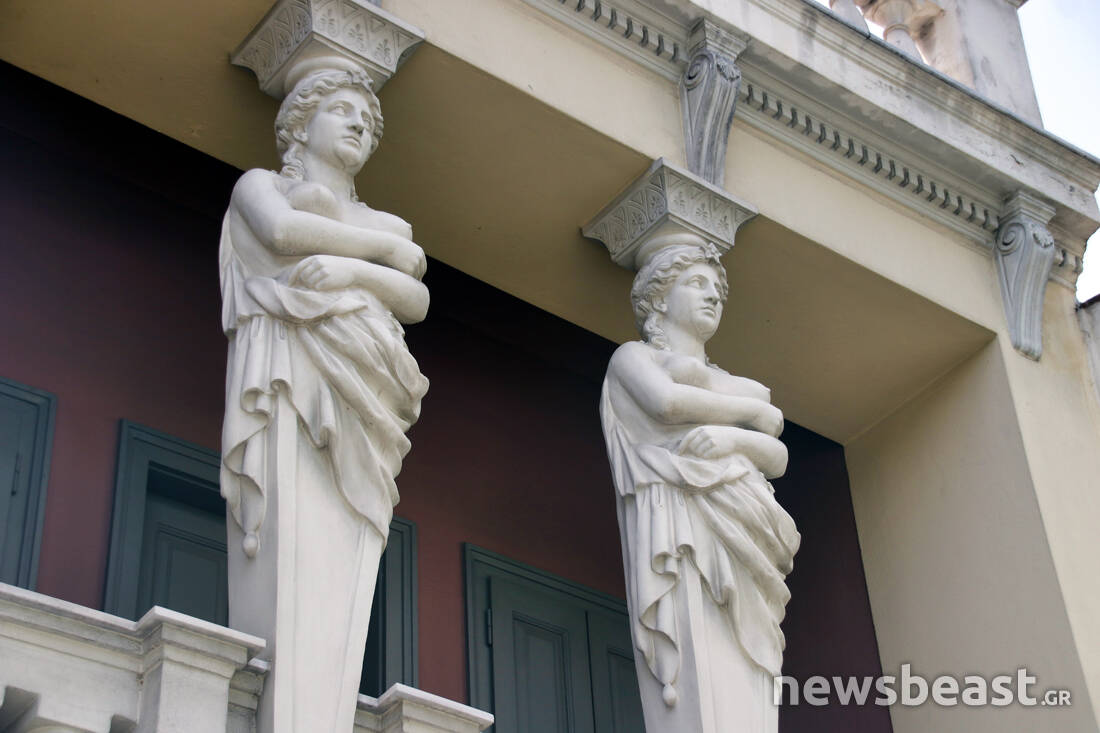
"So let's try to move forward," said Kurtovic. The correspondence between the two statues and the two women is a given. It is the direct subject of photography. But what makes it interesting? One can find infinite correspondences between inanimate objects and human figures, without such similarities being nothing more than whims of luck, paradoxical coincidences that mean nothing. Here, however, it is clear that we are dealing with something more. Here one part of parallelism, the measure of comparison, is a great artistic model, a high aesthetic ideal. And the other part?
Let's look at the two women again, in a somewhat different way this time. Let us see them in relation not so much to the two statues as to the rest, their "earthly" environment: the old barber shop with the downed kepegias, the dilapidated paving slabs, the wall with the eaten plasters, the poor courtyard that can be seen inside through the open door…
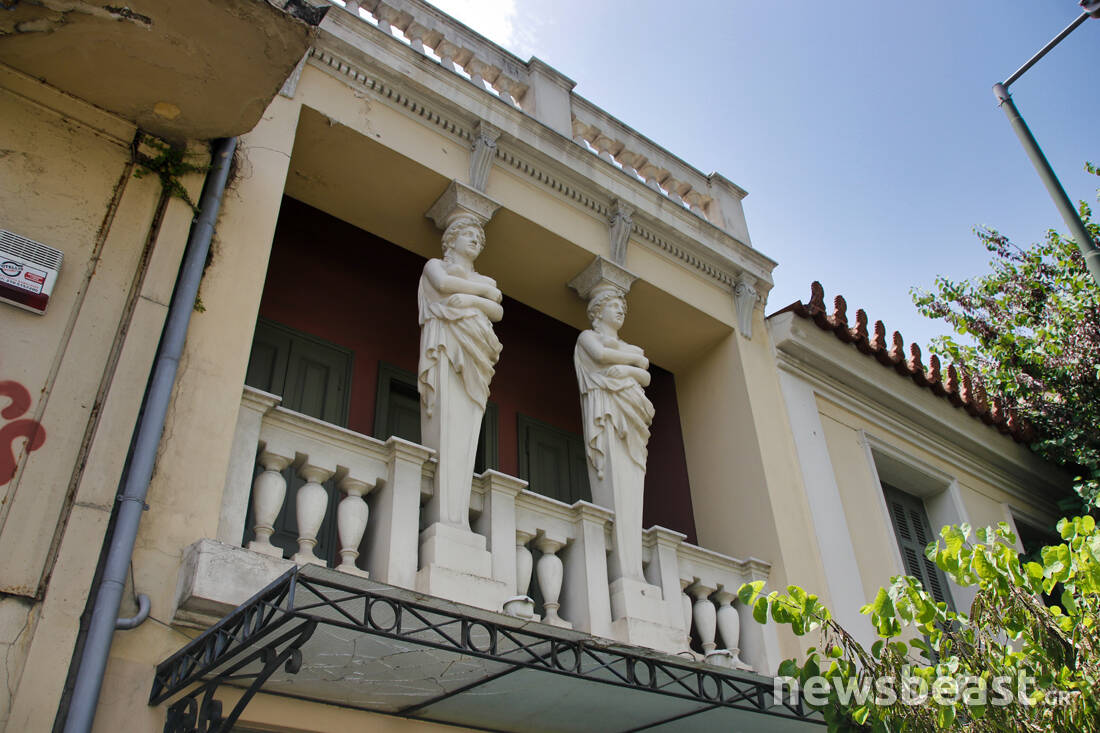
What is it that dominates here? Everyday life and wear and tear. The two women who pass by are not just two old women. It is part of an old, worn and anonymous world, a world in stark contrast to the eternal youth, beauty and glory of the two Caryatids. We are now beginning to suspect the truth. The real issue of photography is neither duration nor decline, but the fall. The world of the two modern Greek women is the imperfect image of a model, an idea. It derives its substance only from this idea and is interesting only insofar as it reflects it. If we remove the two statues from the photo, what remains ceases to attract our gaze, ceases to exist as a photographic subject ".
He concludes, noting that "the Platonism of this photograph is ominous. Not only because it seems to tell us that reality is a blurred reflection of the imagination, and thus cancels the peculiarity of the photograph (reality exceeds the imagination of the artist). But also because it highlights the essence of picturesqueness ”, one thing is beautiful, moving, interesting only when it reminds of something else that is generally recognized as beautiful, moving, interesting. Picturesqueness, looking for superficial similarities between the present and the past, offers the average person a transient illusion of security and meaning in a world that looks like it did not have yesterday. It subjugates the modern to the classic, the new image to the old memory, in the same way that some painters "paint" the photographs, in order to sell them more easily. Let's face it - Henri Cartier-Bresson's photograph from 1953 is the ideological manifesto of mass tourism. "


The source of inspiration will be the property on Asomaton Street for the painter Giannis Tsarouchis who will be at the site to create in 1952 the watercolor entitled "The house with the Caryatids" which now belongs to a private collection in London. As Bresson did a year earlier by putting in the photo he captured two human figures walking, so Tsarouchis placed on his board a series of faces: a mother holding her baby in her arms, a young man in a white T-shirt, a sailor, another man and a grandmother lovingly holding her granddaughter.
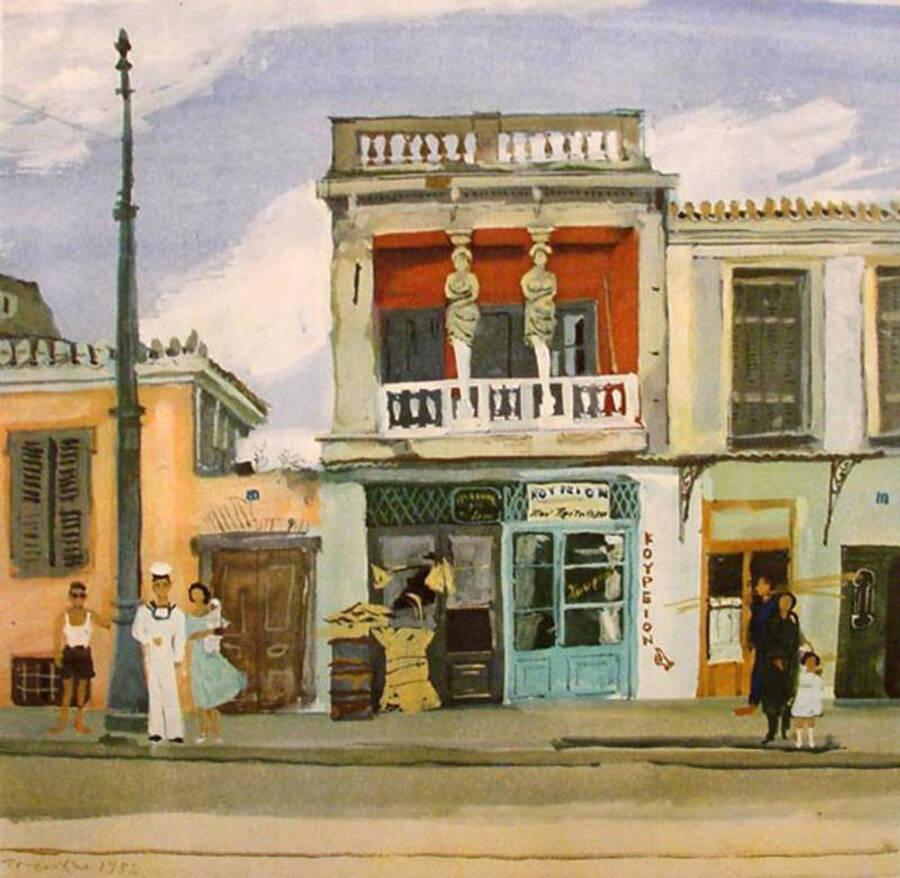

About twenty years later, in the year 1971, Giannis Tsarouchis will create a second painting with this house, giving the work the neutral title "House in Agioi Asomaton" (which also belongs today to a private collection). This time, while marrying the classic past with the popular element, there are no people on the street in front of the petty bourgeois neoclassical. The balcony with the Caryatids also dominates the setting created by the artist for the play "Ecclesiastes" by Aristophanes, which was staged in 1988 at Lycabettus Theater.


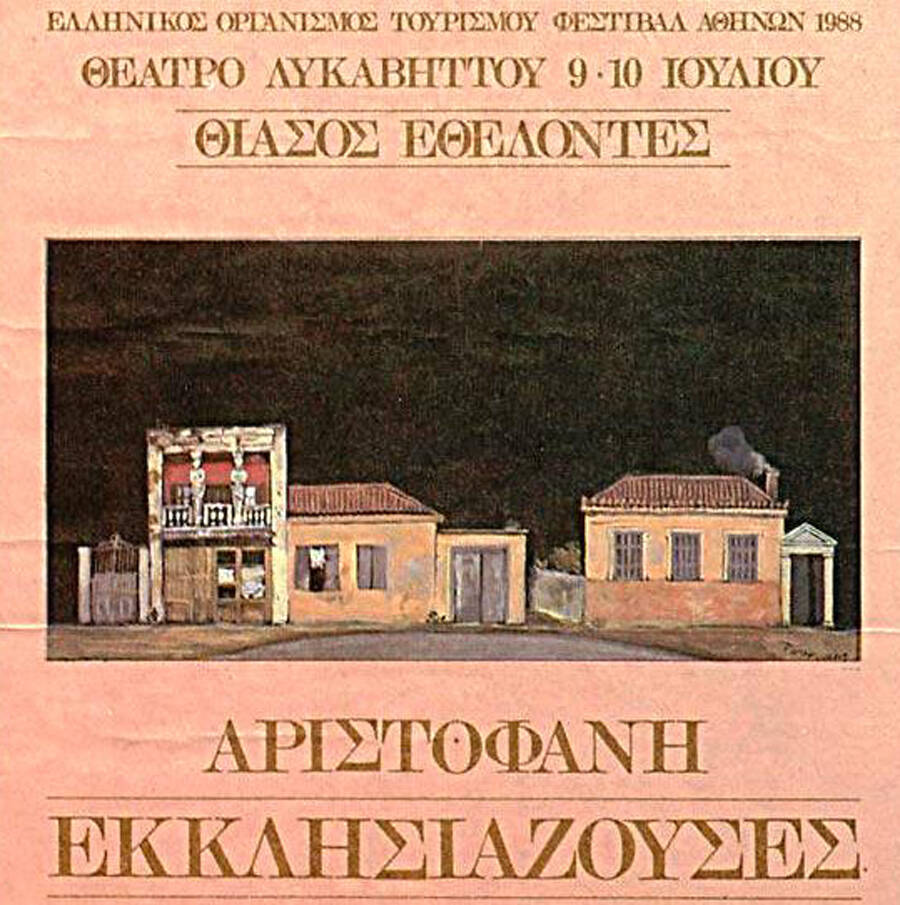

Finally, the novelist Costas Tachtsis included the house with the Caryatids in the fiction of the most famous work of "Third Wreath" published in 1962 as it was the home of the fictional Hecabe. Her father in the short story, had rented the house and was a practical archaeologist who wanted to bridge the gap that separated ancient Greece from the new.
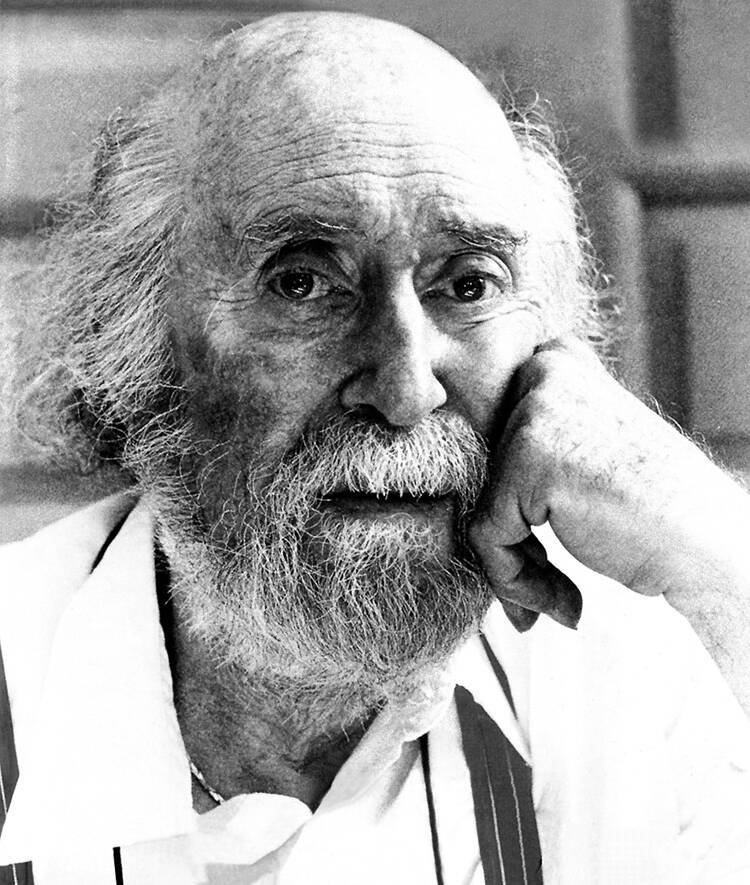

In the literal sense of the word, Caryatids in antiquity were the daughters of Karyes, a city near Sparta, built on the western slopes of Mount Parnon, at an altitude of 950 meters. By "daughter" we do not mean the female child of a parent, but a specific type of statue of the archaic era with a female form (the corresponding male form, which most have probably heard, is called "kouros").
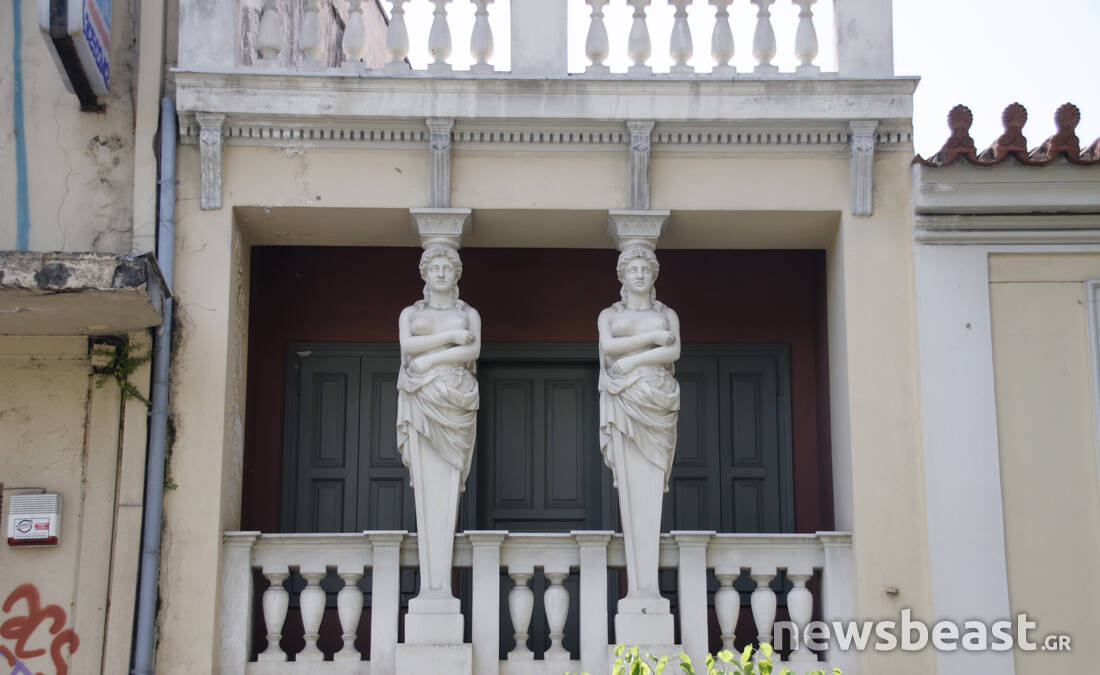
The sculptures depicting a daughter (a variation of which is Caryatid), were used to support the buildings, that is, we would say we were a pillar form in the art of architecture. They were usually placed on facades, gates, cornices, friezes and roofs. Their torso was straight and slender, while their legs either remained closed next to each other or one of the two appeared slightly further forward. The hands are usually on the side and down while its surfaces were painted with bright colors, which, however, disappeared over the years.

